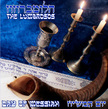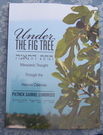But as he who called you is holy, you also be holy in all your conduct,
On the second Sabbath after Yeshua's second Passover with his disciples, Jerusalem Pharisees who came to check out this itinerant Rabbi caught his followers not being particular about the ritual hand washing before eating (Luke 6:1 KJV/DHE).Most English texts report the issue with Yeshua declaring all foods clean/edible which leads to readers to assume that Yeshua abrogated the Torah's dietary laws (Mark 7:19).
The aforementioned clause in the ESV is in parenthesis. This was done to tell us that this particular clause is not part of the translated text, but rather an addendum to the text, which the editors pointed out. This part of the text does not even exist in the KJV which in general tries to keep a more literal translation of Greek sources. As we read this sort of issue in the apostolic texts, before coming to any conclusion, we also need to remember that the instructions Hashem gave the Children of Israel at Mt. Horeb are meant to be eternal and that according to his own words, Yeshua did not come to change them (Matthew 5:17-18).
Some of the mix-up may come from a poor choice of words in English translations. There are two forms of what English biblical texts of Levitical instructions call clean or unclean foods. 1-What meats are edible or non-edible defined today with the Hebrew words, kasher כשר or taref טרף. 2-What is ceremonially fit or contaminated defined by the Hebrew words, tahor טהור and tamei טמא. The latter one concerns foods, walls, fabrics, and even skin afflictions. English texts usually use the expressions clean/ unclean for both which causes confusion.
In the days of the Master the still new pharisaic religious majority was in the process of defining religious observance for everybody. In Judaism, one cannot come to the Temple or even in the presence of the Almighty in a ceremonially contaminated state. As a fence commandment, some Pharisees established that everybody should go though the ritual washing of hands before ingesting any food so as not to contaminate it. This was not part of Torah commandments but rather an interpretative application. In the days of the Master the discussion was still raging among rabbis, and as a Jewish Rabbi, Yeshua took part in the conversation giving it his own perspective, which reflected not only a better understanding of the laws of contamination, but also another side of the Talmudic teachings of the day. Rabbis always expected that the Messiah would one day come and settle their controversies and Yeshua did just that.
The editorial mention that Yeshua made all foods clean with an understanding of an abrogation of the laws of kasherut really is out of place. The concern of the discussion between Yeshua and the Pharisees was not about the Disciples (not Yeshua) eating grains (not meat) with unwashed hands. To therefore interpret that added clause as being about edible or non-edible foods in the Bible is in itself erroneous.
Thus again I advocate that is its crucial for one to know and understand the Levitical Laws, as well as the politics, the culture, and the linguistics present in the days of the Master in Israel in order to properly interpret the narratives left us by Matthew, Mark, Luke, and John.
The laws kasherut and ceremonial fitness were not given to us for health nor any other than an identification of being holy/set-apart as the people of God (Leviticus 11:44). Even today, we can tell people's cultural background by their eating habits, thus the old adage is true: "you are what you eat!" May we learn to apply these rulings in the perspective of the Master just because Daddy said so!
P. Gabriel Lumbroso
For P. Gabriel Lumbroso's devotional UNDER THE FIG TREE in Kindle edition click here.
 RSS Feed
RSS Feed


